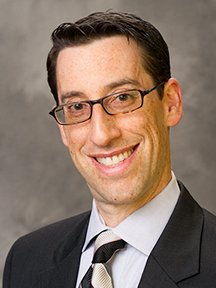
U.S. Supreme Court building. Copyright Gene Quinn 2009.
For the past decade, appellate courts have wrestled with the issue of drug patent settlements. The question can be stated simply: Is it an antitrust violation for a brand-name drug company to pay a generic firm to drop its patent challenge and delay entering the market? But the answer is complex, straddling the intersection of patent law, antitrust law, and the Hatch Waxman Act.
In the past several years, the Second, Eleventh, and Federal Circuits have upheld these settlements (known as “reverse payment” agreements since the money flows from the patentee to the alleged infringer rather than the other way around). These courts have focused on the benefits of settling cases and the presumption of patent validity, and they have explained that payments fall within the “scope of the patent.” In contrast, the Third Circuit recently applied more aggressive scrutiny, rejecting the scope test and finding that payments for delay were “prima facie evidence of an unreasonable restraint of trade.” See Reverse Payment Home Run for Pharma Antitrust Enforcement.
The issue is pressing. The Federal Trade Commission has estimated that reverse-payment settlements cost consumers $3.5 billion each year. And the Third Circuit’s ruling teed up an unavoidable circuit split. It comes as no surprise then that on Friday, December 7, 2012, the Supreme Court (with Justice Alito recused) granted certiorari in the case of FTC v. Watson, which was decided by the Eleventh Circuit in April of 2012.
The case involves AndroGel, a testosterone gel protected by brand firm Solvay’s patent until 2020. Generic firm Watson was the first to challenge Solvay’s patent, filing what is known as a “Paragraph IV” certification. As the first Paragraph-IV filer, Watson was entitled to 180 days of market exclusivity.
[Bio-Pharma]
Although Watson was expected to enter the market in 2007, it settled its patent litigation with Solvay in 2006, agreeing not to enter the market until 2015. Solvay agreed to pay Watson between $19 and $30 million a year, allegedly for promoting AndroGel to urologists.
The Eleventh Circuit stated that “absent sham litigation or fraud in obtaining the patent, a reverse payment is immune from antitrust attack so long as its anticompetitive effects fall within the exclusionary potential of the patent.” The court also rejected the FTC’s argument that it was “more likely than not” that Solvay’s patent was not valid. The court found that this “equate[d] a likely result with an actual result” and that determining the likelihood of success was speculative, “impose[d] heavy burdens on the parties and courts,” and required Federal Circuit review.
While the court pointed to problems in determining likelihood of success, it paid little attention to the Hatch Waxman Act, which encouraged challenges to invalid or noninfringed patents. The court also did not focus on (1) the barrier to entry erected by the 180-day exclusivity period (which blocks all generics until the first filer enters the market); (2) the potential harms of market division presented by agreements to delay entry under cover of an invalid or non-infringed patent; or (3) the aligned incentives of the settling parties.
Finally, the Eleventh Circuit did not recognize, as I have argued, that the “scope of the patent” test assumes the very validity that is at issue in these cases. If the patent is valid, then the brand can legitimately claim that its payment lies within the array of rights provided by the patent. But if the patent is invalid, there is no scope at all.
The issue is now squarely presented to the Supreme Court, which most likely will set the future of reverse-payment agreements on one of two very different paths: (1) near-automatic legality or (2) heightened review along the lines of presumptive illegality.
Given the potential severe anticompetitive harms presented by these agreements and the guidance offered by the Hatch-Waxman Act, I believe that heightened review is appropriate. But either way, it is clear that the Supreme Court’s decision will affect the pharmaceutical industry for years to come.

![[IPWatchdog Logo]](https://ipwatchdog.com/wp-content/themes/IPWatchdog%20-%202023/assets/images/temp/logo-small@2x.png)

![[Advertisement]](https://ipwatchdog.com/wp-content/uploads/2024/04/Patent-Litigation-Masters-2024-sidebar-early-bird-ends-Apr-21-last-chance-700x500-1.jpg)

![[Advertisement]](https://ipwatchdog.com/wp-content/uploads/2021/12/WEBINAR-336-x-280-px.png)
![[Advertisement]](https://ipwatchdog.com/wp-content/uploads/2021/12/2021-Patent-Practice-on-Demand-recorded-Feb-2021-336-x-280.jpg)
![[Advertisement]](https://ipwatchdog.com/wp-content/uploads/2021/12/Ad-4-The-Invent-Patent-System™.png)







Join the Discussion
2 comments so far.
Brian Miller
March 7, 2013 07:10 amHi Michael: I’m a weekend student at Hamline Law School in Saint Paul, Minnesota, and I’m also employed in the Pharmaceutical industry. For a class I’m in, I need to summarize an article about a legal trend, and I plan on referring to your article. Have you done any follow-up commentary on this particular article or subject? Best Regards: Brian Miller
via Cell 952-452-1953
Bob Marshall
December 10, 2012 02:20 pmPayments from the patent holder/brand name drug manufacter to a potential generic drug competitor need not be anticompetitive.
Patent litigation is very expensive. The brand name drug maker could easily spend plural millions of dollars, even plural tens of millions of dollars, in this litigation even if it wins and validates the patent.
A rational business may easily agree to spend less that it’s potential litigation costs to settle the lawsuit even if it believes that patent will be upheld. Such a settlement would reduce transactions costs for both drug makers to the benefit of their customers and owners. The only “losers” in this case would be the outside lawyer-litigators.
The FTC position seems to require these cases to be fully litigated to the benefit of the outside lawyer-litigators.